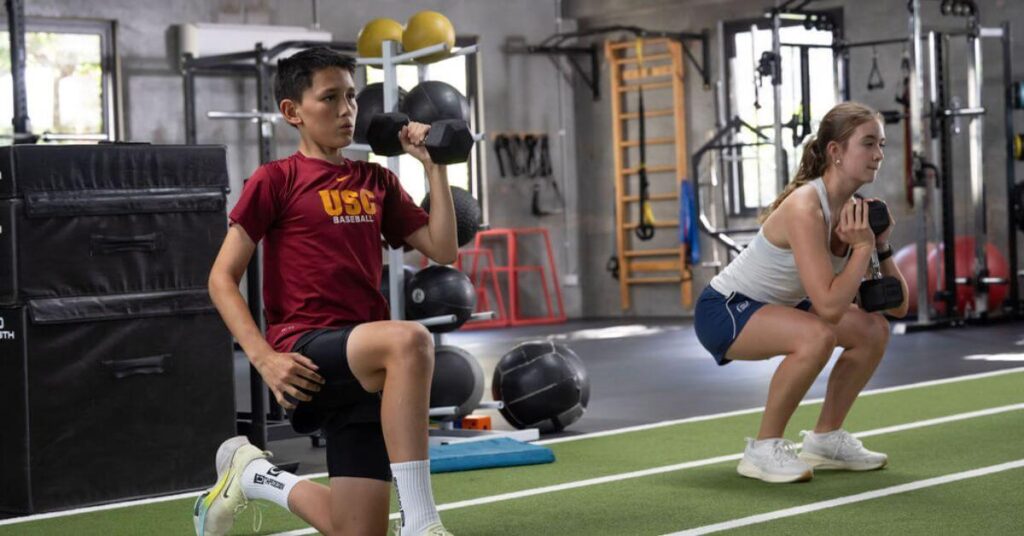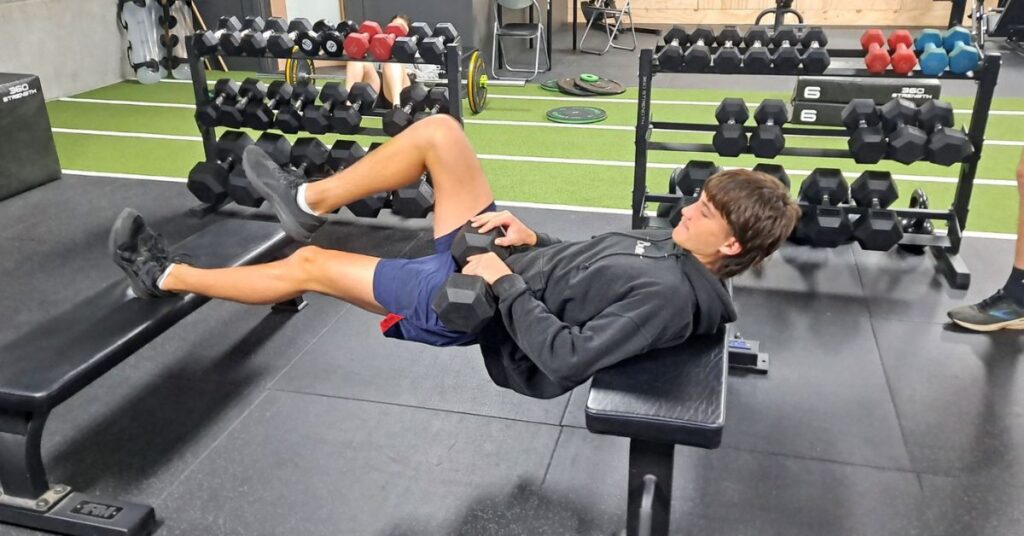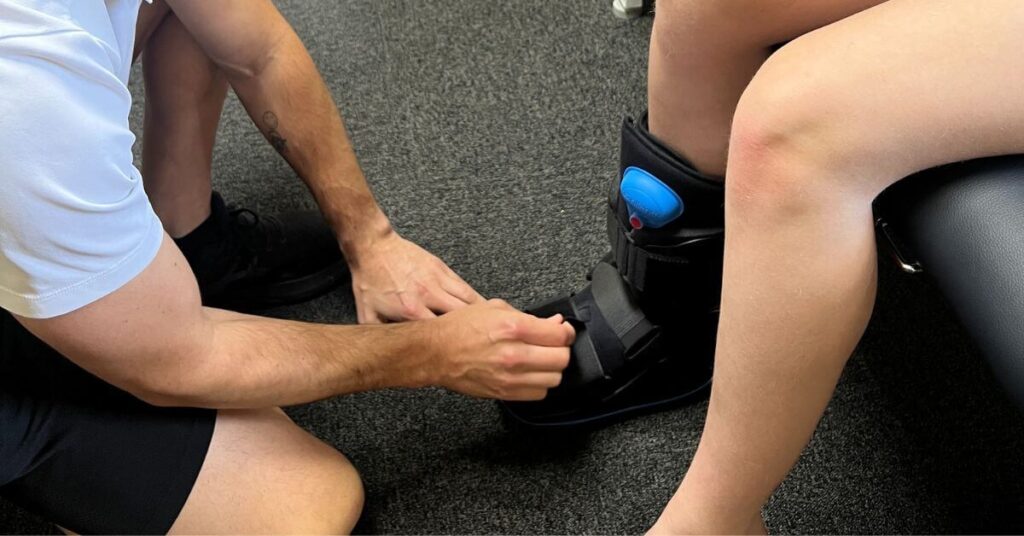Pushing Through Pain in Sports: Is High Pain Tolerance an Asset or Liability in Sports? A Physiotherapist's Perspective
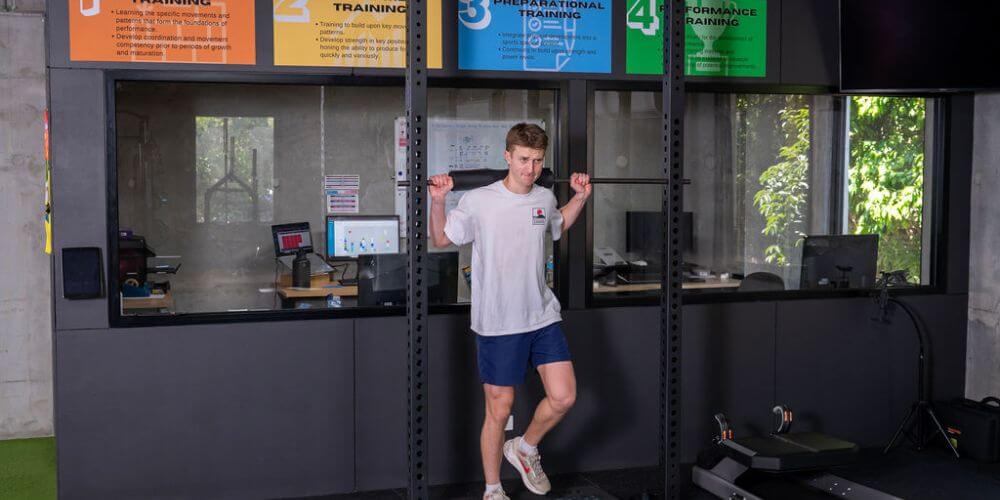
The roar of the crowd, the sting of sweat, and the pulsating ache in your muscles—these are the familiar battle cries of any athlete pushing their limits. It’s ingrained in our culture—the mantra of “no pain, no gain,” urging us to conquer discomfort in pursuit of victory. But for Taylor, a promising young gymnast I once treated, this mantra became a dangerous trap.
But, because she was persistent in reaching her goal, she continually ignored the pain in her ankle, saying it was just regular after-training pain. Despite my warnings, she pushed on, driven by the pressure of an upcoming competition. The consequences were brutal. A seemingly minor ache escalated into a full-blown ankle fracture, shattering her dreams for the season and leaving her facing months of rehabilitation.
This wasn’t an isolated incident. As a sports physiotherapist for many years, I’ve witnessed countless athletes like Taylor’s high pain tolerance turning into a double-edged sword. While it fuels their determination and resilience, it can also mask underlying injuries and lead to devastating setbacks.
So, what’s the truth about pain tolerance in sports? Is it truly an asset, or can it be a liability? The answer, as with most things in life, is not black and white. This blog aims to unravel the complex nature of pain tolerance in sports, arguing that while a high pain threshold is often heralded as a hallmark of athletic prowess, it demands a sophisticated understanding and strategic management.
The Science of Pain in Sports
Defining High-Pain Tolerance
Growing up, I wasn’t the kid who cried over scraped knees. My friends winced; some even cried, but I brushed it off, barely feeling a thing. In fact, I often surprised adults with my seemingly nonchalant attitude towards pain. What others found excruciating, I perceived as a dull throb, a passing annoyance. I later learned that this was my introduction to the world of high pain tolerance.
High pain tolerance is an intriguing human ability, that allows individuals to withstand discomfort and pain to a greater extent than the general population. Unlike the pain threshold, which marks the onset of pain, pain tolerance is about endurance—the length and intensity of pain one can bear before succumbing.
Demystifying Pain: Beyond the “No Pain, No Gain” Myth
As an athlete myself, I’ve experienced the full spectrum of pain—the burning ache of pushing through a tough workout, the sharp twinge of a minor injury, and the dull throb of a nagging issue that just won’t go away. But it wasn’t until I became a sports physiotherapist that I truly understood the fascinating science behind pain and its crucial role in our bodies.
Let’s explore the intricate dance of pain receptors, nociception, endorphins, and the delicate balance between pain threshold and tolerance, all while weaving in the real-world implications of these concepts.
Pain Receptors and Their Network
Imagine tiny sentinels stationed throughout your body—these are your nociceptors, specialised cells that detect potentially harmful stimuli like heat, pressure, or tissue damage. Think of them as alarms that trigger a cascade of events:
- Transduction: The alarm goes off! Nociceptors send electrical signals along nerve fibres (think of them as alarm wires). For example, when an athlete experiences a sudden, sharp pain from a sprained ankle, it’s the nociceptors at work, translating physical stress into a signal the brain can interpret.
- Transmission: This refers to the transfer of the message up the spinal cord, where it can be modulated by “calming” chemicals like endorphins (more on these later).
- Perception: Finally, the brain interprets the signal as pain, with its intensity and location depending on various factors. It’s not just about the physical sensation but how we interpret and react to it, influenced by emotions, previous experiences, and even cultural background. This subjective nature of pain perception means that two athletes can experience the same injury differently.
Pain Threshold vs. Tolerance: Knowing Your Limits
Let my experience demonstrate the difference between the two: I love basking under the sun. That initial prickle I felt on my skin, the moment it transitioned from warmth to discomfort—that was my pain threshold. It’s the body’s alarm system, a biological tripwire signalling potential danger. For me, this threshold can vary depending on the stimulus. A cold plunge might trigger it sooner than a sustained muscle burn during a workout.
Now, sometimes I’d become adventurous and go for a tan. Although I felt that initial prickle on my skin, I pushed on to get my tan. The heat becomes more intense, but I found ways to manage it—seeking shade, applying sunscreen, or simply gritting my teeth until the very end. This, my friends, is my pain tolerance in action. It’s your mental and physical capacity to endure pain beyond the initial threshold.
We all have different pain thresholds—the minimum intensity we can perceive as painful. But it’s pain tolerance—the amount of pain we can endure—that’s truly individual. This is where things get interesting, especially for athletes. Athletes, in particular, exhibit remarkable variations in pain tolerance, shaped by their training, mental fortitude, and even cultural and social attitudes towards pain. It’s a testament to the human spirit’s capacity to endure, adapt, and overcome. My own experience taught me that increasing pain tolerance is as much about mental training as it is about physical preparation. Techniques such as mindfulness, visualisation, and positive self-talk became invaluable tools in my arsenal, enabling me to push through the pain barrier and achieve what once seemed insurmountable.
By recognising these distinctions and understanding your own pain profile, you can make informed choices and navigate discomfort with greater confidence. So, the next time you feel the burn, remember—it’s not just physical, it’s a fascinating interplay of body and mind!
Pain Tolerance Across Sports and Training Levels
Ever wondered why a marathoner can push through excruciating muscle burn while a rugby player barely flinches after a bone-rattling tackle? The answer lies in the unique demands of different sports and the varying levels of pain tolerance they require. As a former athlete who dabbled in both endurance and contact sports, I can attest to this firsthand.
I clearly recall my days of running long distances as a hobby. They were so helpful in becoming masters of chronic pain management. The rhythmic pounding of the pavement on my feet, the relentless ache in my quads, and the ever-present stitch in my side—these became my constant companions. Pushing through required mental fortitude as much as physical strength. Visualising the finish line, focusing on my breath, and relying on past experiences to manage the discomfort became essential tools for pain management. But step onto a rugby field, and that familiar burn pales in comparison to the sharp jolt of a tackle, the sting of a scraped knee, or the dull throb of a sore muscle. It’s a whole different ball game—literally!
The truth is that different sports demand different pain tolerances. My marathoner’s pain is chronic—a dull roar demanding mental fortitude to push through. A rugby player’s pain, however, is often acute, with sharp bursts triggered by collisions and impacts. Their tolerance needs to be high for both, demanding a unique blend of physical resilience and mental grit. Team sports like soccer or basketball blend both worlds. The sprints jumps, and changes of direction bring the acute pain of exertion, while the jostles and collisions add the chronic element. Here, pain tolerance becomes a complex tapestry, woven from physical and mental resilience—the ability to push through fatigue while staying alert for the next challenge.
Training Adaptations Across Disciplines
Thankfully, training isn’t just about physical conditioning; it also shapes our pain tolerance. Rugby training involved short bursts of intense activity, conditioning my body and mind to withstand and quickly recover from acute pain. It was about building muscle, enhancing agility, and preparing for the physical demands of contact. Endurance training for a marathon, however, was a different beast. It was about increasing stamina, improving cardiovascular efficiency, and, most importantly, elevating my pain threshold. The physiological and psychological adaptations were markedly different, reflecting the unique demands of each sport.
Psychologically, training adaptations extend beyond the physical realm. Mental conditioning, such as visualisation, mindfulness, and cognitive behavioural strategies, plays a pivotal role in managing pain. For example, during my marathon training, I often employed dissociation techniques, focusing on external stimuli to distract from the discomfort. Conversely, in rugby, association strategies—tuning into the body’s signals—helped anticipate and manage the pain from potential impacts.
Are Athletes made to Endure Pain?
Elite athletes feel the burn but push through it better than the rest of us, according to a study published in Frontiers in Psychology. The research compared pain tolerance, thresholds, and intensity in elite football players and endurance athletes like cross-country skiers, marathon runners, and non-athletes.
Here’s what they found:
- Champions of pain: Overall, elite athletes showed higher pain tolerance, reported feeling less pain, and had higher thresholds for heat-induced pain compared to non-athletes.
- Endurance edge: Endurance athletes took the pain tolerance crown, showing even greater tolerance for cold pain than both soccer players and non-athletes. They also reported feeling less pain overall compared to non-athletes.
- Mind over matter: The only psychological factor significantly impacting pain perception across all groups was “fear of pain,” highlighting its importance in how we experience pain.
Possible reasons:
- Pushing the limits: The study suggests that sports demanding long durations of intense activity, like endurance sports, might enhance pain tolerance through physiological adaptations related to aerobic capacity.
- Mental muscle: Athletes might develop mental strategies for managing pain during gruelling training and competitions.
Pushing the Right Buttons: Strategies for Pain Management
As a sports physiotherapist, I’ve witnessed countless athletes pushing their limits, often encountering pain along the way. The mantra ‘train smart, not just hard’ encapsulates the essence of modern sports training. It’s a call to athletes to embrace strategies that enhance performance while prioritizing health and longevity. While pushing hard is admirable, managing pain effectively is crucial for both performance and long-term health. Here, I’ll share practical strategies to help you cope with pain, optimise training, and stay ahead of the game.
Mindfulness Techniques: A Game Changer in Pain Management
Mindfulness isn’t just a trendy buzzword; it’s a powerful tool for managing pain. By focusing on the present moment and accepting your pain without judgment, you can:
- Reduce stress and anxiety, which can exacerbate pain perception.
- Improve focus and concentration, allowing you to perform better despite discomfort.
- Boost resilience and mental toughness, helping you cope with challenges and setbacks.
I recall working with a marathon runner who struggled with chronic knee pain. Through the incorporation of mindfulness techniques such as breathing exercises, body scans, and proper visualisation, we were able to significantly reduce his pain perception, enhancing his focus and resilience. These techniques not only aid in coping with pain but also improve overall well-being and performance, making them indispensable in the athlete’s recovery toolkit.
Proper Recovery Protocols: The Key to Pain Management
As a sports physiotherapist, I cannot stress enough the importance of nutrition, sleep, and rest in preventing and managing pain. Prioritise nutrient-dense foods, aim for 7-9 hours of quality sleep, and schedule rest days within your training program. I advise athletes to focus on whole foods and ensure they’re adequately hydrated, tailoring their nutrition to their training demands. Remember, rest isn’t laziness; it’s essential for allowing your body to repair and adapt.
Listening to Your Body’s Signals
Your body speaks volumes; learn to listen! Pay attention to these signals:
- Monitor pain levels: Use a pain scale to track your pain and identify patterns.
- Differentiate good pain from bad pain: good pain is achy and subsides with rest. Bad pain is sharp and persistent and shouldn’t be ignored.
- Seek professional help. If pain is severe, persistent, or impacting your life, consult our sports physio experts here at Run Ready, a sports doctor, or a trainer for diagnosis and guidance.
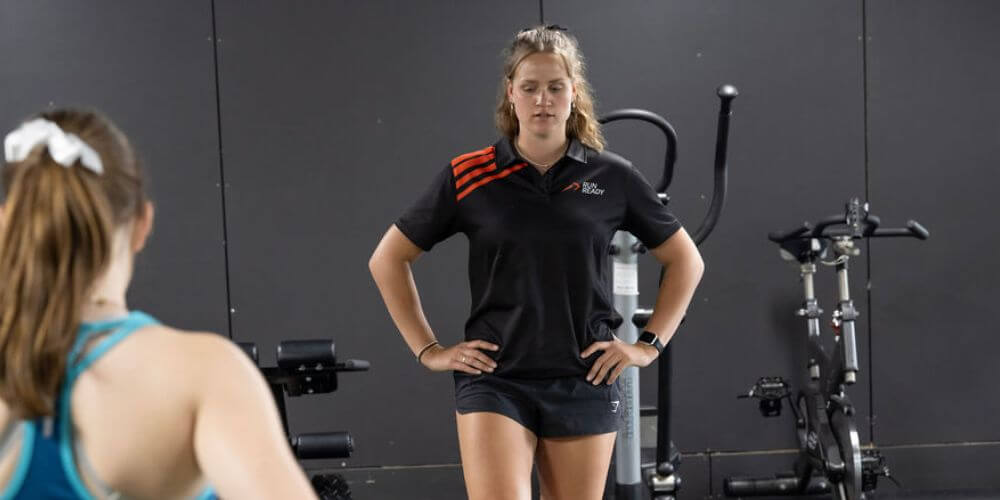
Is a High Pain Tolerance Always Beneficial?
As an athlete, pushing through pain is often seen as a badge of honour. But is a high pain tolerance always beneficial? In my experience as a sports physiotherapist at Run Ready in Melbourne, the answer is a resounding no. While pain tolerance can be a valuable tool, it’s crucial to understand its limitations and potential dangers.
A certain level of pain tolerance is essential for any athlete. It allows you to train effectively, overcome challenges, and experience the thrill of pushing your limits. But, the key lies in developing pain awareness and understanding the difference between “good” pain (muscular fatigue) and “bad” pain (indicating injury). In my practice at Run Ready, we emphasise the importance of this distinction, guiding athletes to listen to their bodies and respond appropriately to pain.
As the great Muhammad Ali once said, “Champions aren’t made in gyms. Champions are made of something they have deep inside them – a desire, a dream, a vision.” Don’t let pain become a roadblock to your dreams. Embrace pain awareness, seek expert guidance, and push your limits responsibly. At Run Ready’s Sports Physiotherapy, we’re here to help you achieve your athletic goals, safely and sustainably.
FAQ
Pain tolerance is a double-edged sword for athletes. On one hand, pushing through discomfort can lead to improved performance and resilience. On the other hand, ignoring pain signals can result in injuries and hinder progress.
Enhancing pain tolerance involves a deliberate and controlled approach to exposure to discomfort. This doesn’t mean recklessly pushing through pain but rather gradually increasing the intensity of training within safe limits. Techniques such as interval training, cold water immersion, and mental resilience exercises are commonly used. Each of these methods introduces the body and mind to controlled stress, thereby improving tolerance over time.
Because increasing pain tolerance is complex, it’s important to get the help of sports physiotherapists like ours to guide you through your journey. This ensures that the training plan is appropriate and avoids the risk of injury. At Run Ready, our team of experts is equipped to provide athletes with advice on safe training practices, injury prevention, and pain management strategies. Our goal is to support athletes in achieving their performance targets while maintaining overall health and well-being.
As athletes, we push our bodies to their limits, embracing the burn and celebrating the soreness that comes with a challenging workout. But amidst the muscle fatigue and sweat, discerning between “good pain” and “bad pain” can be tricky. After all, who wants to sideline themselves unnecessarily yet also risk ignoring a deeper issue? At Run Ready, our expertise in sports physiotherapy across all sports disciplines positions us as leaders in guiding athletes through this complex terrain.
“Good pain” is a term often used to describe the discomfort associated with the positive stress of exercise on the body. This type of pain is generally a dull, achy sensation experienced in the muscles, signalling that they are being challenged, adapted, and strengthened. The pain you experience 24 to 48 hours after working out or training is known as “Delayed Onset Muscle Soreness” and is an indication that your muscles are entering the stage of recovery.
Now, let’s talk about the red flags. Sharp, stabbing pain, especially at rest, is a sign your body is saying, “STOP!” It could indicate injury, inflammation, or overuse. Ignoring it can worsen the problem and delay healing. Unlike good pain, bad pain can occur abruptly during exercise or persist at rest, pointing towards potential injuries like fractures, tears, sprains, strains, or infections. Ignoring this pain can exacerbate the injury, leading to prolonged recovery times and, in some cases, chronic conditions.
Remember, pushing your limits doesn’t mean ignoring your body’s signals. Embrace the good pain, learn to decipher the bad, and let Run Ready be your partner in achieving peak performance while prioritising your well-being.
Physiotherapy plays a crucial role in managing pain for athletes, offering a holistic approach that not only targets the immediate discomfort but also addresses the root causes to prevent future injuries. At Run Ready, our expertise in sports physiotherapy across all sports disciplines puts us at the forefront of athlete rehabilitation and pain management. Our approach integrates state-of-the-art techniques and personalised treatment plans to ensure athletes can return to their sport stronger and more resilient.
Our experienced physiotherapists at Run Ready delve deep into the biomechanics of each athlete, identifying the precise cause of pain. This might involve a detailed analysis of an athlete’s movement patterns, strength assessments, and flexibility tests. By pinpointing the exact areas of concern, we can devise a treatment plan that not only alleviates pain but also corrects the underlying dysfunction. Understanding that pain management is multifaceted, Run Ready combines physiotherapy with a range of other strategies. This includes education on injury prevention, self-management techniques to empower athletes in their recovery, and, when necessary, collaboration with medical professionals for medication management. Additionally, we incorporate psychological support to help athletes overcome the mental barriers associated with injury and pain.


